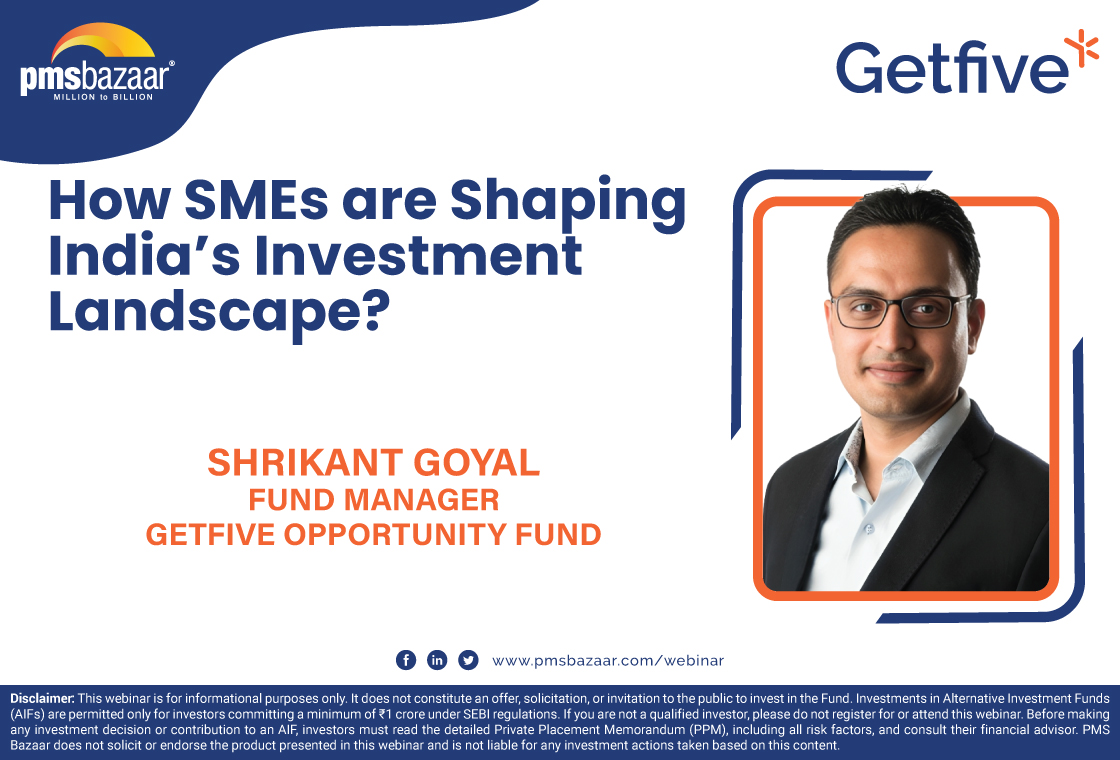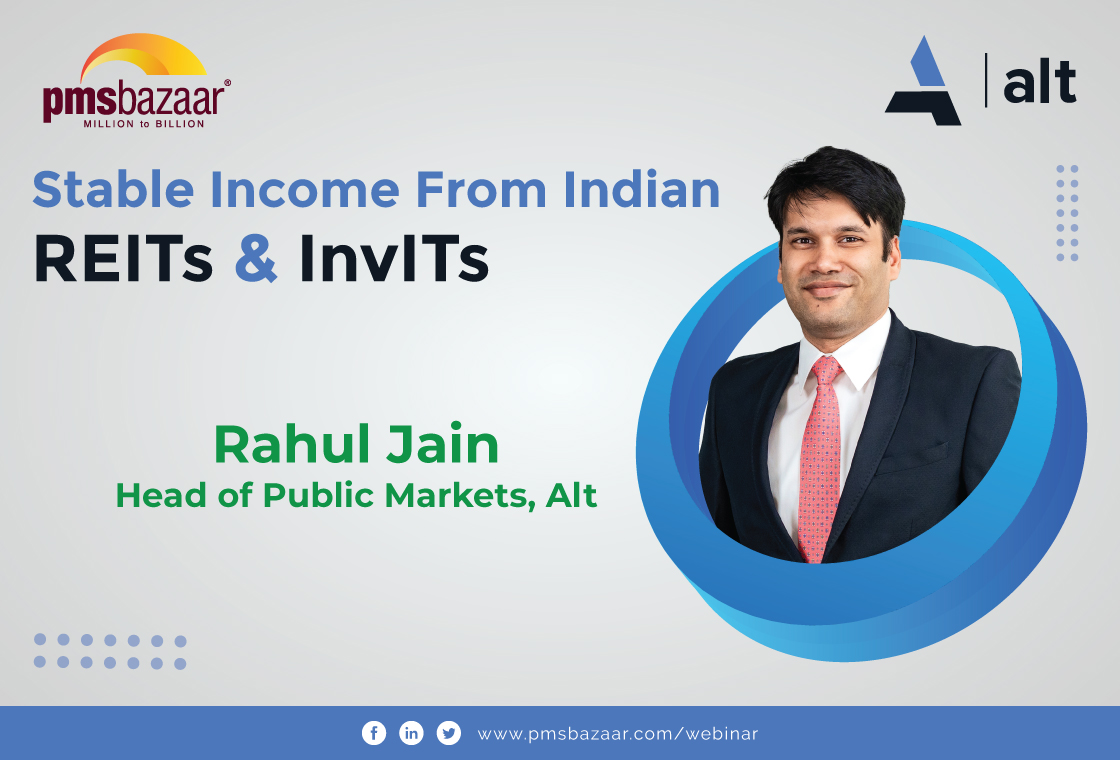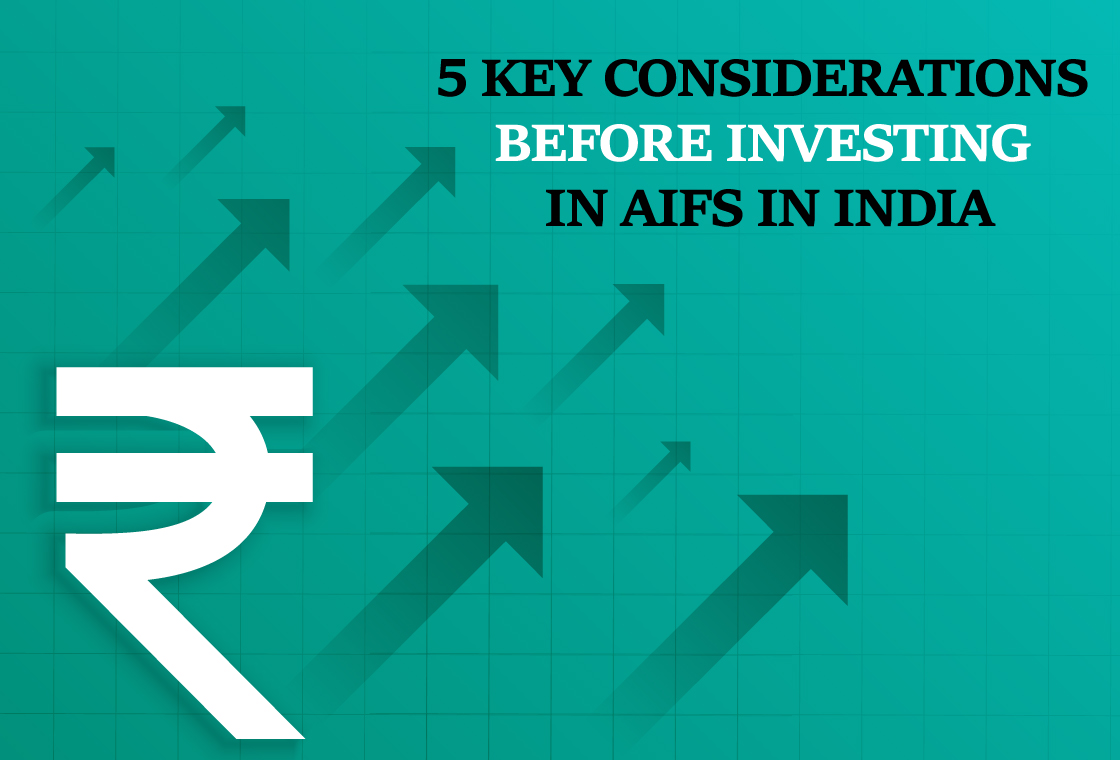Understanding the ultra HNI segment in the wealth management landscape is very important and this blog will give an in-depth understanding of this important investor segment. This is an excerpt from the 3rd episode of the Emkay Alpha Mavens video series presented by the founder and CEO of Sanctum Wealth Mr. Shiv Gupta

Emkay Alpha Mavens is an informative series that brings out valuable insights on Wealth Management straight from experts in the industry. We, PMS Bazaar, are presenting the 2nd Season of this insightful video series in partnership with Emkay Investment Managers Limited.
Catch up with the upcoming episodes of Emkay Alpha Mavens and many other insightful webinars and interviews in the PMS & AIF on our Youtube channel
Key aspects of the ultra HNI segment covered in this blog:
- Defining and profiling the ultra HNI segment
- Factors influencing the selection of wealth management firms in the ultra HNI segment
- Dynamics of an ultra HNI portfolio
- Investment trends in the ultra HNI segment
Defining the Ultra HNI segement:
Different businesses use different models of segmentation to classify Ultra HNI. There are different definitions categorizing ultra HNIs differently. But, according to Mr. Shiv Gupta, today individuals with 15-20 crores and more of investable assets can be classified as Ultra HNI Investors.
Profiling the HNI Investors:
When asked about profiling HNI Investors into different segments, Mr. Shiv Gupta introduced two factors: (1) Investment profile (2) Service delivery framework
The Investment profile is an important factor. The inputs that go into the profiling process include Investment objective, Risk reward attitude, Investment personality, Level of knowledge, Situation from which the investor comes, etc. All these inputs will form the psychographic profile from which we can derive a way to construct an ultra HNI portfolio. Ideally, this finds its way into the Investment policy statement.
When it comes to service delivery frameworks, different investors have different styles of wealth management. Some are very involved & some are less involved, some review their portfolio regularly & some do not, some are very tactical & some are looking for the long term. So, we have to consider these factors as well.
Both the Investment profile and service delivery framework put together will create different buckets from which we can derive delivery propositions for wealth management services.
The problem in the Wealth Management Industry:
“I don’t think profiling is something we as an industry do very well” claims Mr. Shiv Gupta.
For the industry to grow, thrive, and clients to trust the service providers, profiling is very important and we have a long way to go in that. The reasons behind the inability to profile accurately are the subjective nature of the factors and clients not sharing the full information.
Factors influencing ultra HNI segment in the selection of Wealth Management Firms:
Mr. Shiv Gupta introduced two frameworks when asked about the approach of ultra HNIs in selecting a wealth management firm (1) Customer value and (2) Customer value curve.
1. Customer-Value Framework: It is an important factor that applies to all business models and has four components – (1) Functional value (2) Financial value (3) Experiential value (4) Social value.
From a customer’s perspective -
- Functional value is about the functional deliverables that a customer gets
- Financial value is about the pricing deals that a customer strikes with us
- Experiential value is about the experience that a customer gets through interactions
- Social value is about the customer’s feeling of being a part of something.
Clients will allocate different weightage combinations to these factors for selecting the right firm for wealth management.
2. The customer value curve: It is about things that a customer will look at before selecting a wealth management firm. It includes Relationship manager, Portfolio performance, Quality of advice, Quality of the platform, Technology used in the platform, etc.
Customers take all these factors into consideration and rank firms based on their own weightage allocation before selecting a wealth management firm.
Importance of Referrals in ultra HNI segment:
Mr. Shiv Gupta claims that many customers don’t have a full understanding of all the aspects of the firm. Many choose wealth management firms based on testimonials, opinions of the people in their close network, and Referrals.
Mr. Shiv Gupta also revealed that almost 60%-70% of Sanctum Wealth’s customers are on-boarded through referrals.
Qualities expected by the Ultra HNI segment in a Wealth Manager:
Mr. Shiv Gupta defines a baseline that Sanctum Wealth ensures in its wealth managers. According to him, to provide an entire value chain of advice, wealth managers should have a macro-economic view that needs research capabilities, should provide strategic asset allocation which needs strong analytical capabilities, and should have an ongoing asset allocation framework that needs clarity on the whole ecosystem.
These form the baseline for the capabilities that a firm providing an end-to-end investment proposition like Sanctum Wealth should have for the ultra HNI segment.
Involvement of Ultra HNI Investors:
The spectrum of customers in the ultra HNI segment ranges from people who are not very involved to people who demand regular updates. From his experience, Mr. Shiv Gupta points out that as we move towards the higher end of the investment, client involvement gets higher.
From his observation of the wealth management landscape in India over the last 15-20 years, Mr. Shiv Gupta said that there is an increase in the desire to understand the risk and features of the products and instruments in this ultra HNI Segment.
The Preferred International Investment Avenues of the Ultra HNI segment:
The two predominant routes for international investment are feeder funds and LRS Platforms. Though they are very small, they both are growing exponentially. Many digital platforms are coming up from the international markets for the LRS route, and there is an increase in the adoption of those routes in recent times. Even the government is encouraging these platforms with initiatives like Gift City.
When it comes to countries, the US is the most preferred country, with market data indicating that almost 75% of feeder funds are in the US.
Currently, the Overall allocation to international investment is very small, with just 5% in LRS (both equity and debt) platform last year, and just 3% of equity this year. But it’s growing.
The Home Market Bias in the ultra HNI segment:
Globally ultra HNI investors have a home market bias which makes people invest more in the home market. Even in the US market, only 15% of their portfolio is in International equity. So, lesser investment in international avenues is a common phenomenon in the ultra HNI segment, across the globe.
Real estate in the ultra HNI portfolios:
In markets like China, India, and other Asian countries, the allocation of real estate in the ultra HNI segment’s portfolio is higher. The reason behind this phenomenon, according to Mr. Shiv Gupta, is that these markets had structurally constrained economic circumstances 20-30 years back and real estate, being the only inflation adjusting asset of that time, thus occupied a predominant portion of the portfolio.
In the Indian context, real estate’s representation in asset allocation is very high. Though the performance of real estate assets is very low, many Indian ultra HNIs still have a disproportionate portion of their portfolio occupied by it. The main challenge in changing this trend, as per Mr. Shiv Gupta’s observation, is many ultra HNIs don’t see real estate as a part of their allocation. Many Indian ultra HNI investors don’t look at the asset allocation holistically and exclude the real estate, managing their assets in portions.
Market-wise, European markets have very less allocation of real estate in ultra HNI portfolios, Asian & Indian markets have more and the US market lies in between.
The role of Debt in an ultra HNI Portfolio:
According to Mr. Shiv Gupta, 40% in equity, 40% in debt, and 20% in alternatives will be a balanced asset allocation strategy. The Debt component of this combination will provide a risk-adjusted return. At a portfolio level, an investor can expect around 12%* returns (*Depending on the market of investment). Debt will dampen the volatility of the portfolio as it’s less volatile and less correlated.
The Risk Appetite of ultra HNI investors:
There is a common misconception that HNI investors are risk-takers. Since most Ultra HNI investors in the upper end of the wealth spectrum are entrepreneurs, they are generally perceived as risk-takers. But according to Mr. Shiv Gupta, with a larger corpus, the ultra HNI investors do include high-risk investments like VC (Venture capital) funds, PE (Private equity) funds, etc. But on a portfolio level, the asset allocation will be a normal distribution with a balance in asset allocation.
The problem of over-diversification in the ultra HNI segment:
The investors in the ultra HNI segments are moving towards diversification than concentration. According to Mr. Shiv Gupta, most HNI investors are now going for over-diversification. The reasons that can be mapped to this over-diversification are - having 3-4 different relationships, purchasing products without a holistic approach, base rate negligence (not updating the base rate), etc.
The problem with over-diversified portfolios is they will always be lower than or on par with the market performance. So, investors should move towards measured concentration to get the desired alpha.
The time horizon of investment in the ultra HNI segment:
Many ultra HNI clients have a compartmentalized approach. So at a portfolio level, the time horizons are shorter in this segment. From his experience, Mr. Shiv Gupta observes that most ultra HNI investors don’t have a time horizon of more than 3 years. A very small portion of the ultra HNI investors tends to go for longer investment time horizons.
Mr. Shiv Gupta covered all the above-mentioned topics in-depth and also answered some questions from the audience towards the end of the session. Watch the recording of this insightful session through the appended link below:
Get access to rich data and analytics of PMS & AIF by subscribing to us. Join the 37000+ investors & experts now: https://pmsbazaar.com/Home/Login
Recent Blogs

Long-Only AIFs Rebound Sharply in October; Long-Short Strategies Lag Despite Lower Volatility
106 long-only AIFs averaged 3.68% vs 32 long-short AIFs at 2.7%; only 24–31% of funds beat key indices

Markets log strongest monthly gains in 7 months; PMS performance turns near-uniform in October
Nifty 50 TRI gained 4.62%, BSE 500 TRI rose 4.27%; 415 of 427 equity PMSes ended positive

How SMEs are Shaping India’s Investment Landscape?
PMS Bazaar recently organized a webinar titled “How SMEs are Shaping India’s Investment Landscape?” which featured Mr. Shrikant Goyal, Fund Manager, GetFive Opportunity Fund.

Stable Income from Indian REITs and InvITs
PMS Bazaar recently organized a webinar titled “Stable Income from Indian REITs and InvITs,” which featured Mr. Rahul Jain, Head of Public Markets, Alt.

5 Key Considerations Before Investing in AIFs in India
Alternative Investment Funds (AIFs) have emerged as a compelling option for sophisticated investors seeking diversification and potentially superior returns. But venturing into AIFs requires a clear understanding of their unique characteristics that go beyond simply knowing what they are and their categories.

How AIF can help in diversification?
Traditionally, Indian investors have relied on a mix of stocks and bonds to build their wealth. While this approach offers diversification, it can still leave your portfolio vulnerable to market fluctuations. Enter Alternative Investment Funds (AIFs), a dynamic asset class gaining traction for its ability to unlock diversification beyond the realm of conventional options.

Long-Short AIFs Outperform Again Even as Markets Rebound in September
104 long-only funds shows an average monthly gain of just 0.37 per cent, while long-short AIF category averaged 0.94 per cent

Resilience returns as markets rebound in September; Multi-asset PMSes lead pack
Over 63% of equity PMSes ended September in green; nearly two-thirds outperformed key benchmarks.

